By Joseph G. Ogega, a student in Financial Mathematics at the University of Minnesota and CFA level I candidate.
On Tuesday December 5th, the CFA society hosted a technical analysis workshop with Ralph Acampora, a renowned enthusiast of market analytics. Ralph comes with a broad range of experience from Wall Street, not to mention, he’s previously served as the Director of Technical Analysis Studies at New York Institute of Finance, a currently holds the Director of Technical Research at Altaira Capital Partners.
Ralph started by giving a brief intro on how he, in the company of his friend, initiated the idea behind CMT (Chartered Market Technician), in the early days of his career. Up until then, there was no well-known technical analysis library, which he later helped set-up. He defined technical analysis as the study of data generated from demand and supply of price activity. Ralph further believes that a holistic diagnosis of market dynamics should encompass fusion of technical and fundamental analysis. He also put emphasis on trading with movements in price and volume simultaneously. Typically, stocks go through cycles of four phases of price activity: accumulation, momentum, diffusion and consolidation. This perhaps was the highlight of the workshop.
While there could be many ingenious ways of drawing trend lines, Ralph prefers the simplistic approach of connecting ascending lows and declining highs. The decision on how often one would like to trade, whether daily, weekly or monthly, will highly influence the type of time-bounded charts they will find useful. “Always keep your eyes to right of the price chart and draw them slowly to the left, looking out for ‘support’ and ‘resistance’ price-levels,” says Acampora.
In summary, Ralph shared this approach regarding investing in equities:
- Choose index
- Look at the internal breadth of the market. taking into account the proportion of stock that goes up vs. down
- Sentiments: includes market info, company perception and inside activity
- Sector analysis
- Intermarket analysis
As a parting thought, Ralph spoke about the four-year presidential cycle exhibited in the stock market. Historically, presidential elections year tend not to have any significant effect on the price of stocks. However, in the succeeding year, stock prices have consistently gone down, before the market recovers up until the next election period, which marks the beginning of the next cycle.








